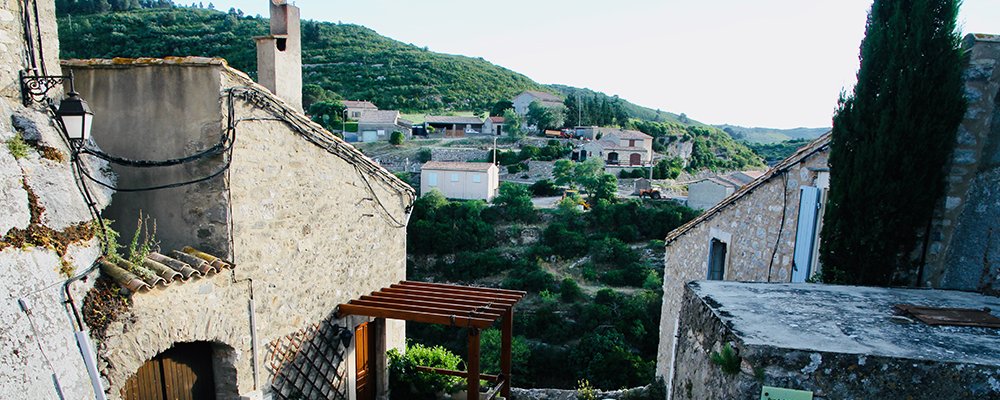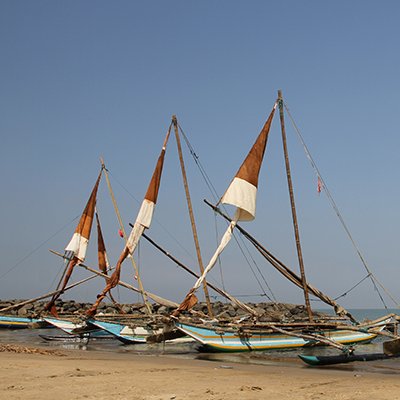Located just over an hour's drive from Carcassonne in the historic Languedoc region of southern France, the quaint village of Minerve is renowned as one of the most beautiful villages in the area. A former Cathar stronghold dating back to the 10th Century, the enclave of Minerve dominates the Cesse gorges with its incredible natural rocky bridges, making it an exceptional geological site.
Here is the footprint of prehistoric hunter-gatherers, the haunting remnants of an imposing medieval citadel built by the Viscounts of Minerve, and a testament to the bloody history of suffering as it became a Cathar stronghold. Known as a powerful and impenetrable city, the surviving Cathars sought refuge here from the massacre happening in Béziers during the Albigensian Crusade in 2010. It was after this that Minerve endured six weeks of hell as the ruthless Simon de Montfort (who later defeated King Henry III) and the northern barons used the newest military weapon of the time, the siege machine, to destroy the stronghold of the Cathars in Minerve. He had four massive catapults constructed on site around the walls of Minerve to throw massive stone balls and dead animals (to spread disease) over the fortifications. Legend would have us believe that more than 200 Cathars jumped from the ramparts to their deaths rather than surrender, such was their defiance. Upon the defeat of the Cathars, when the town's only well, Puits St-Rustique, was destroyed, cutting off the town's water, Montfort, as leader of the military, had 140 Cathars who refused to recant burned at the stake in the town square.

The turbulent history of Minerve runs through its cobblestone streets like blood dripping all those years ago. There is a Memorial for the Cathars honoring their memory and spirit of free thought, the Stèle de Minerve, erected in 1982 near the 11th-century church, Saint-Etienne, which is believed to have an altar dating back to 456. This memorial features the beautiful carving of a dove known as 'the dove of light', created by the artist Jean-Luc Severac. Quite close to the tourist office, there is the 'Rue des Martyrs', believed to be the street that the Cathars walked down to the village square for their execution. On this same street, you will find a remnant from when the Knights Templar used the village as their base. It's a stone archway bearing a Maltese Cross denoting the Order of the Templars.
The history of the Cathars can be gleaned by visiting the Hurepal Museum. It’s possible to take a peek at a reproduction of a catapult used during this time, known as 'la Malvoisine' (translated from French—the bad neighbour), which appears to still threaten Minerve. Little remains of the once-rich castle apart from the octagonal Candela tower, situated near the entrance to the village, where visitors can park their cars, as the town is pedestrian-only.
Entering the village is a step back in time. The streets are lined with ancient and weathered stone houses, small artisan shops, and barely-there entrances to a labyrinth of tiny passageways waiting to be explored. It's a living museum, but one catering to the desires of travelers for local wine, fresh baguettes, and perhaps a more hearty and warming cassoulet. And, the region's creamy goat's cheese is a mouthful of the countryside, with its distinct, earthy, and nutty flavor reflecting the wild herbs and plants that the goats graze on. Cafes and restaurants showcase the food heritage of the area in dishes featuring local ingredients such as wild game, lamb, fowl, specialty mushrooms, regional fish, and crispy, fresh young vegetables straight from the surrounding fields, complemented by the use of vinegars from the nearby town of Orléans, of Joan of Arc fame.

The wine of the region has its own long history, dating back to when the Greeks introduced it in the 6th Century BC. The Minervois wine region is named after the village. An interesting fact is that 'Minerva' was named after the virgin Roman goddess of war, who was also a fighter for just causes and a goddess of music, wisdom, and crafts, associated with the Greek goddess Athena. This wine region is famous for its full-bodied, rich red wines, usually blends of Syrah, Mourvèdre, and Grenache. Vibrant rose wines can be found, as well as aromatic white wines crafted from varieties such as Bourboulenc, Marsanne, and Roussanne, which tempt the wine connoisseur with their diverse notes of spices, ripe fruit, and herbal nuances that range from velvety and soft to complex and powerful.
Officially classified as one of the 160 villages in France’s ‘Plus Beaux Villages de France’, Minerve is a destination to be slowly savoured for its beauty and history while indulging in the decadence of a lazy long lunch—after walking the town, of course.
Gail Palethorpe, a self proclaimed Australian gypsy, is a freelance writer, photographer and eternal traveller. Check out her website Gail Palethorpe Photography and her Shutterstock profile.















